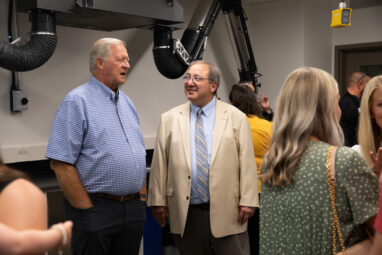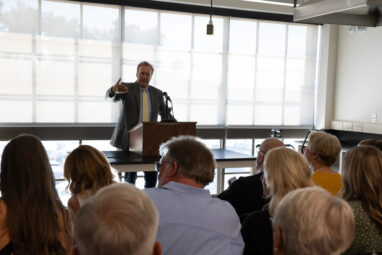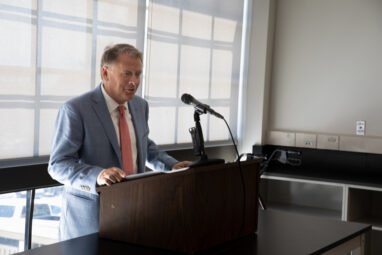The University of Utah’s John and Marcia Price College of Engineering has dedicated its renovated Civil & Environmental Engineering undergraduate teaching laboratories to Alan W. Layton, an honorary alumnus, founding member of the College’s Engineering National Advisory Council, and long-time benefactor of the U.
The new Layton Building’s state-of-the-art facilities will support students from multiple departments and disciplines, but focuses on technologies related to civic infrastructure and advanced construction materials.
The building was originally built in the 1930s by the U.S. Department of Mines and Reclamation. Its rededication as the Layton Building comes after a $5.3m renovation project, featuring seismic, sustainability, and accessibility upgrades, as well as a suite of new educational and research labs.

The building’s new Maker Space will serve as an onramp into the Civil & Environmental Engineering disciplines, allowing freshmen to quickly start making — and breaking — their own designs. Its Hydraulics Laboratory is a critical addition for juniors in the department, who will use it to study water and wastewater infrastructure, as well as environmental, geotechnical, and materials engineering. Its Cyber Infrastructure Lab will fuse traditional construction techniques with big-data-informed approaches to sustainability through the integration of sensor and networking technology.
At the Layton Building’s dedication ceremony on August 8, University of Utah President Taylor Randall remarked on the value of investing in such spaces.
“Our students need to be in labs, to be around people, to get tactile with their education,” said Randall. “Building community, building colleagues, building resilience in our society — that will happen here. What makes a campus electric is places where people can come together and make long-term memories.”
That focus is in line with the building’s namesake. A child of the Great Depression Alan W. Layton entered the University of Utah in 1937 and began studying civil engineering as a sophomore. Before Layton could graduate, however, he was called to active duty in World War II. While serving as a Field Artillery Captain, Layton was seriously wounded by a landmine in the Battle of the Bulge; he remained hospitalized for more than a year before receiving the Purple Heart and a medical discharge.

After returning to Utah, Layton worked as a construction engineer with the Bureau of Reclamation between 1948 and 1952. In 1953, he founded Layton Construction Company, focusing on commercial and industrial projects including the Jordan River Temple, Cougar Stadium, Primary Children’s Medical Center, the Moran Eye Center, and the Salt Lake Airport’s parking structure and Delta Terminal Expansion.
Though Layton never graduated from the U, he remained deeply involved in the development of new programs and facilities on campus, especially related to the Department of Civil & Environmental Engineering. He served on several planning committees, including as a founding member of the College’s Engineering National Advisory Council, and was awarded an honorary Masters Degree from the College of Engineering and a Lifetime Achievement award from the University.
“Quality, integrity and commitment to excellence were Alan’s values,” said Richard Brown, H. E. Thomas Presidential Endowed Dean of the Price College of Engineering. “The facilities and equipment that are in the building now named after him will make a big difference in our students’ educations.”
Civil & Environmental Engineering Chair Michael Barber emphasized the timeliness of the project, as well as the opportunities it will provide to faculty and students in his department.
“There’s a record interest in the discipline given the infrastructure challenges we’re facing,” said Barber. “The importance of the renovation of this building cannot be overemphasized. A building that was effectively storage space is now the pride of our department in terms of showing students the opportunities that lie in Civil Engineering.”
The Layton Building’s named facilities and spaces include: “Alta’s Landing” stairwell, funded by the family of Alta Shigeta, (BSCE ’69); the Barlow Hydraulics Lab, funded by J&S Mechanical Contractors; the Clyde Companies Construction Materials Lab; the Layton Construction Maker Space; the Cyber Infrastructure Lab, funded by the families of Grant E. Marsh (BSCE ‘61) and Ralph J. Marsh (BSCE ‘62); the North Ridge Construction Saws/Sifting Lab; and the Jack B. Parson Ready Mix Concrete Research Lab and the Asphalt Materials Lab, both funded by Stalker Parson Materials & Construction Company.










